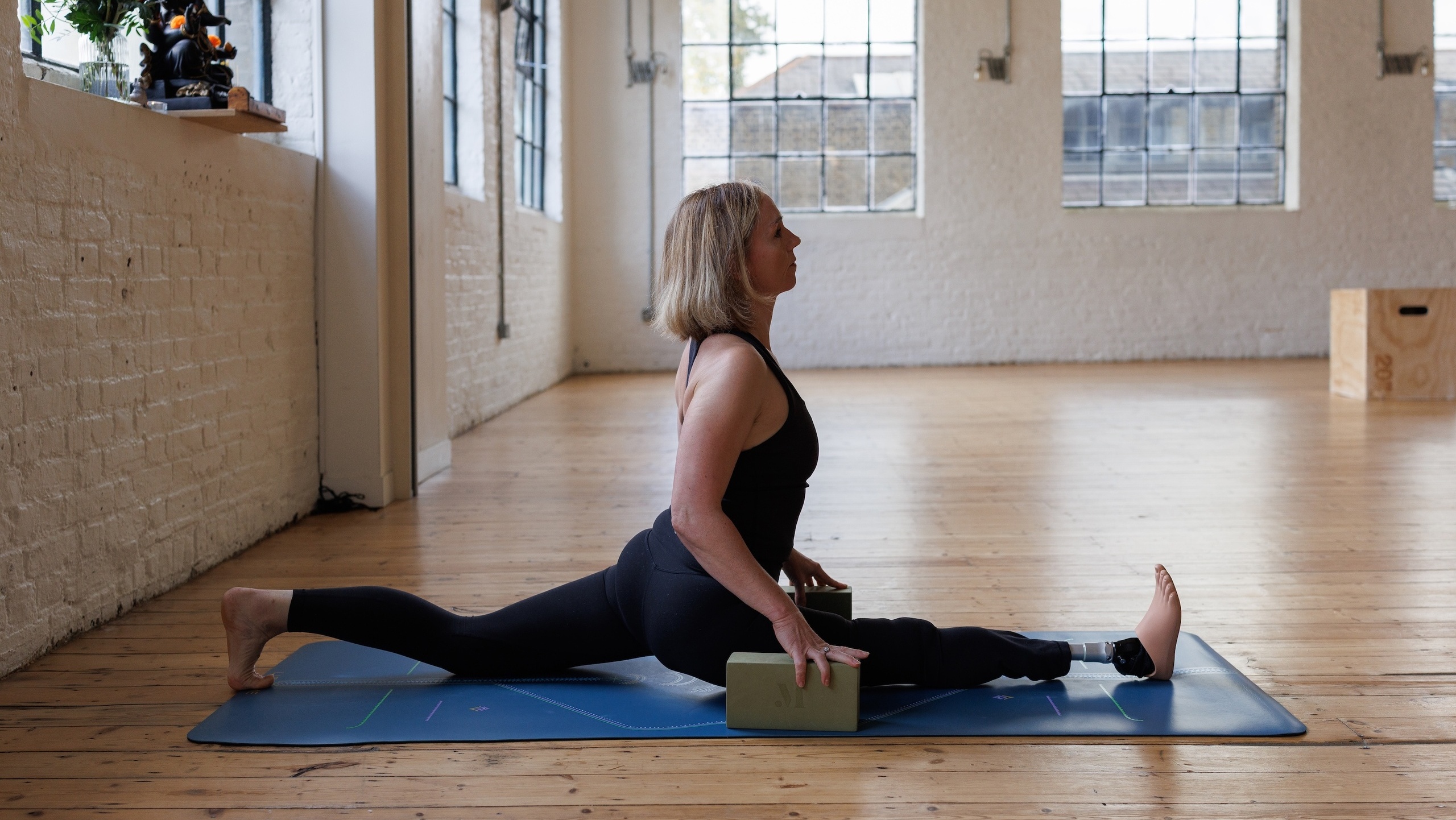“International Day of Persons with Disabilities” on December 3 invites us to reflect on the power of turning struggles into strength, and what it means to live our dharma, our life’s purpose. My dharma as a yoga teacher is deeply shaped by my disability, which has helped me see again and again that everyone is working with something: pain, anxiety, fear, injury, doubt.
Some limitations are visible, others are carried quietly, and yoga provides us with endless opportunities to face them all.
Since I lost my leg in the 2004 Asian Tsunami I have refused to be defined by my disability, whether as a mother of two, or in my career as a lawyer. But until I began my yoga practice the limitations that my disability posed to my body loomed large to me. My yoga practice shifted this.
My disability gave me a puzzle to solve by as I practised yoga: I loved working out different ways that I could access the poses with a prosthetic leg, and gradually over time, as the poses came more easily, I started to understand how wrong the way I saw my body had been in the past. Yes, I might have been missing part of my leg, but the rest of my body was perfectly able, and proving it to me every single time I practised yoga. Most importantly, my mind was also capable of transforming even what initially seemed like insurmountable obstacles into victories when I focused on a pose and took the right action.
The more time I spent in the yoga room, the more I realised that everyone had something going on that made them feel limited in some way. As I became more involved in the yoga community, I met people I never would have crossed paths with in other parts of my life: models, actresses, dancers, singers. From the outside, they looked like they were made for yoga. Unlike me.
I was intimidated at first. I didn’t think I had anything in common with them. But as I got to know them, they began opening up. They told me about the problems they had with backbends, or how their shoulders were so stuck they thought they’d never achieve certain poses. Others shared how sensitive their stomachs were to particular foods or drinks, or how their anxiety kept them awake at night.
I could hardly believe it. To me, they seemed perfect: perfect bodies, perfect clothes, perfect faces. Their yoga poses looked perfect too. They even wore makeup to the 7am classes and looked like they had already had a shower, while I was barely awake, rolling out of bed, pulling on leggings, and crawling to the studio — still wearing last night’s makeup if I had any on at all.
But their struggles were real to them. They were genuinely limited by those challenges.
That’s when I realised I wasn’t alone in feeling limited. Everyone struggles. The only difference was that my limitation was visible, especially in a yoga room. I had learned to work with it over years and had become something of an expert at turning it into opportunities, both on the mat and in life and, like it or not, that visibility drew attention in the yoga room. It was then that I realised that disability is not an exception; it is a mirror. It reminds us that human beings are not meant to be flawless; we are meant to grow.
So I decided to use it. If I could transform my disability into potential, and my attitude toward it into something that others, disabled or not, could use to approach their own limitations, then I had to.
And I did.

